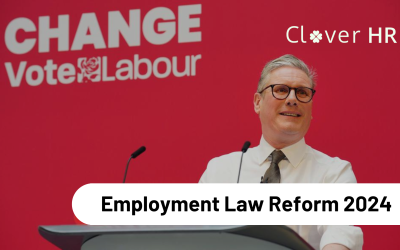The Chancellor announced that “a new Coronavirus Job Retention Scheme” would be set up to help pay people’s wages. Employers will be able to contact HMRC for a grant to cover most of the wages of their workforce who are on the payroll but temporarily not working due to the coronavirus outbreak.
These are ground-breaking measures in unprecedented times; further to our recent posted blogs, more detailed guidance has been provided by the government, published on 4th April 2020. Therefore, we wanted to share the detail of this latest update with you. The main areas of update are highlighted below.
Which employers are eligible?
It was announced that any UK organisation with employees can apply, including businesses, charities, recruitment agencies (agency workers paid through PAYE) and public authorities. The employer must have created and started a PAYE payroll scheme on or before 28th February 2020 and have a UK bank account. There is no change here, although now you must have enrolled for PAYE on-line.
The new guidelines state that individuals can furlough employees provided they are paid through PAYE and were on the payroll on or before the 28th February 2020. Foreign nationals are also referenced as eligible to be furloughed.
What will the employer need to do?
- Designate affected employees as ‘furloughed workers,’ with the appropriate consent and notify them. To be eligible for the subsidy employers should write to their employee confirming that they have been furloughed and keep a record of this communication. The new guidelines state that a record of this communication must be kept for five years.
- Inform HMRC of the furloughed employees and their earnings through a new online portal. To claim, the employer will need their ePAYE reference number, the number of employees being furloughed, the claim period (start and end date – the employer can only make one claim every three weeks), the amount claimed (per the minimum length of furloughing of 3 weeks), bank account and sort code, contact name and phone number. The employer will need to calculate the amount that they are claiming. The employer may be audited on all aspects of their claim. The claim should be made in accordance with actual payroll amounts at the point at which payroll is run.
- It is clearly stated in the new guidelines that all of the grant that the employer receives for the employees’ gross pay must be passed on to the employee; no fees can be charged from the money that is granted.
What is a furloughed worker?
A worker sent home by the employer because the employer cannot provide him or her with work but is kept on the payroll rather than being dismissed.
Therefore, an employee not working for another reason would not be “furloughed”, e.g. if currently on sick leave due to either having symptoms of COVID-19 or due to advice to self-isolate. However, the guidance says that employees who are shielding in line with public health guidance can be placed on furlough. The latest guidelines state that if an employee needs to stay at home with someone that is shielding and they are unable to work from home and otherwise would be made redundant, they can be furloughed. In addition, employees who have caring responsibilities resulting from COVID-19 can be furloughed. This includes employees that need to look after children.
The employee should not do any work for his or her employer whilst furloughed. An employee who is still working but has agreed to reduce their hours and pay would not be furloughed. A furloughed employee can take part in volunteer work or training, if it does not provide services or generate revenue for, or on behalf of your organisation. Clarification has been given that an employee can be furloughed by one employer and receive a furlough payment but continue working for another employer and receive their normal wages.
More detail is given regarding employees on fixed term contracts and the fact that they can be furloughed.
There is further detail about apprentices and that they can be furloughed in the same way as other employees and can continue to train whilst furloughed.
How much will the Government pay?
You will receive a grant from HMRC to cover the lower of 80% of a furloughed employee’s regular wage capped at £2,500 per month plus the associated Employer National Insurance contributions and minimum automatic enrolment pension contributions on that subsidised wage. Previously we were advised that fees, commission and bonuses should not be included. This has now been amended to state that you can claim for any regular payments you are obliged to pay your employees. This includes wages, past overtime, fees and compulsory commission payments. However, discretionary bonus (including tips) and commission payments and non-cash payments should be excluded.
For employees whose pay varies, if they have been employed for a full twelve months prior to the claim, you can claim the higher of either.
- The same month’s earnings from the previous year.
- Average monthly earning from the 2019-20 tax year.
If the employee has been employed for less than a year, you can claim for an average of their monthly earnings since they started work.
Does the employer have to “top up” the employee’s pay?
The employer could choose to fund the differences between the payment that they receive under the scheme and their salary but does not have to. Employer National Insurance Contributions and automatic enrolment contribution on any additional top-up salary will not be funded through this scheme.
How quickly will the employees be reimbursed?
There is currently no detail setting out when the reimbursements will be made. The expectation is that the online service will be made available by the end of April 2020.
If you would like further guidance or support on this matter or require advice on other people management matters please contact Clover HR on 0121 516 0299 or email us at info@cloverhr.co.uk
Copyright Clover HR


